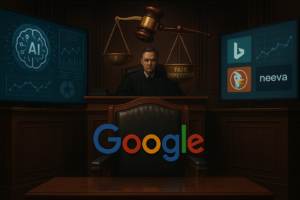Navigating the Cybersecurity Landscape: The Role of Artificial Intelligence in Combatting Threats
As cyber threats evolve, government agencies are urged to leverage artificial intelligence to enhance their defenses. This article explores the importance of staying updated with emerging technologies and the transformative potential of AI in strengthening cybersecurity measures.
The Need for Adaptation and Innovation
In an era where cyber threats lurk around every digital corner, the call to action for government agencies is clearer than ever: adapt and innovate. The Deputy Prime Minister, Datuk Seri Fadillah Yusof, emphasizes the critical need for these agencies to stay ahead of the curve by embracing new and emerging technologies. Among these, artificial intelligence (AI) stands out as a formidable ally in the fight against cybercrime.
AI’s Impact on Cybersecurity
AI has been revolutionizing various sectors, and its impact on cybersecurity is profound. By harnessing machine learning algorithms and advanced data analytics, AI can detect patterns and anomalies that human analysts might overlook. This capability is essential in identifying suspicious activities in real-time, ultimately leading to quicker response times and fortified defenses.
Advantages of AI in Cybersecurity
- Speed and Efficiency: AI can process vast amounts of data at lightning speed, overcoming the challenges faced by traditional security systems that struggle with the sheer volume of data generated daily.
- Automation: Agencies can automate routine monitoring tasks, allowing human experts to focus on more complex challenges, thereby increasing efficiency and enhancing overall security posture.
- Continuous Learning: AI-powered systems can adapt and learn from new threats, analyzing attack patterns and adjusting defenses accordingly, fostering a proactive approach to cybersecurity.
Challenges in AI Adoption
However, the adoption of AI in cybersecurity is not without its challenges. Concerns around privacy, data protection, and the potential for bias in AI algorithms must be addressed. Government agencies must ensure that the implementation of AI technologies adheres to ethical guidelines and regulatory standards. By prioritizing fairness and transparency, they can build public trust while leveraging AI’s capabilities.
Collaboration Between Sectors
Another critical aspect to consider is the collaboration between government agencies and private sector organizations. By sharing knowledge and resources, they can enhance their collective cybersecurity efforts. Public-private partnerships can lead to the development of innovative solutions that leverage AI for improved threat detection and response.
Investment in Training and Education
As we move forward, it is imperative for government agencies to invest in training and education to equip their workforce with the necessary skills to understand and utilize AI technologies effectively. This investment not only prepares them for current challenges but also ensures they are ready for the future landscape of cybersecurity.
In conclusion, the integration of artificial intelligence into cybersecurity strategies is essential for government agencies aiming to stay ahead of cyber threats. By embracing this technology, they can enhance their defenses, respond to incidents more efficiently, and ultimately protect the public from the growing menace of cybercrime. The future of cybersecurity lies in innovation, and AI is a crucial component in navigating this complex landscape.


